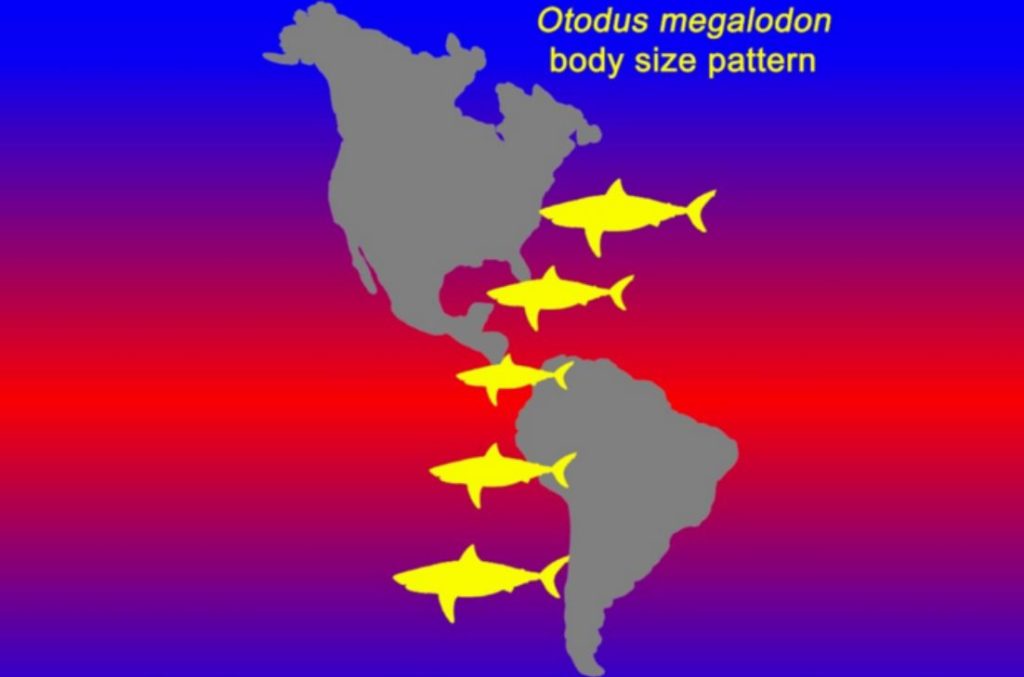The giant extinct Megalodon or megatooth shark grew to larger sizes in cooler settings than in warmer ones, says a new study.
Kenshu Shimada, professor of paleobiology at DePaul University, and coauthors reexamine the body size trends of Otodus megalodon, a fossil shark that roamed nearly the whole world between around 15 and 3.6 million years ago.
In books and movies, such as the 2018 sci-fi thriller “The Meg,” Otodus megalodon is widely described as a massive, monstrous shark.
In actuality, this species is only known from fossilized teeth and vertebrae, while it is widely recognized academically that the species was gigantic, reaching heights of at least 50 feet (15 meters) and probably as high as 65 feet (20 meters).
The current study re-examined previously published records of Megalodon tooth occurrences across the globe, as well as their estimated total body lengths.
“Our findings suggest a previously unrecognized body size pattern for the fossil shark, notably following a geography-driven ecological pattern known as Bergmann’s rule,” explained Shimada.

Bergmann’s rule, first proposed by a German biologist Carl Bergmann in the mid-1800s, is a broad generalization stating that larger species flourish in cooler temperatures because their mass allows them to retain heat more efficiently than smaller animals.
“Scientists constantly search for rules of life that help us predict natural patterns, and it seems that Bergmann’s rule applied to Otodus megalodon,” added coauthor Victor Perez.
Several Megalodon sites have previously been recognized as suitable nursery regions for the fossil shark due to their average Megalodon tooth size in comparison to other Megalodon localities. However, the current study discovered that Megalodon’s previously reported nursery regions are near the equator, where the water is warmer.
“It is still possible that O. megalodon could have utilized nursery areas to raise young sharks. But our study shows that fossil localities consisting of smaller Megalodon teeth may instead be a product of individual sharks attaining smaller overall body sizes simply as a result of warmer water,” added coauthor Harry Maisch.
“The idea of this new study originated from casual conversation that took place during a recent fishing trip to the Florida Keys by the lead author, his family and me, stemming from a basic question: where do large fish live?” highlighted coauthor Martin Becker.
Despite being initiated by this simple question, “the results of this study have important implications for understanding how modern climate change is rapidly accelerating marine habitat shifts to more polar latitudes in apex predators such as sharks,” according to co-author Michael Griffiths.
“The main conclusion of this study is that not all geographically different Megalodon individuals grew to gigantic sizes equally. The common notion that the species reached 18–20 m TL should be applied primarily to populations that inhabited cooler environments,” added Shimada.
Source: 10.1080/08912963.2022.2032024
Image Credit: DePaul University/Kenshu Shimada
You were reading: Cooler Waters Make Megalodon More Gigantic – New Research